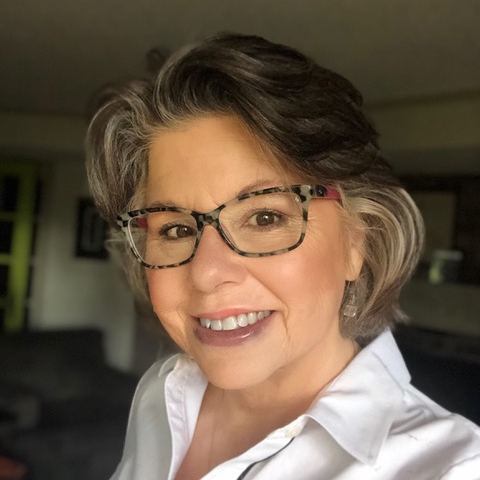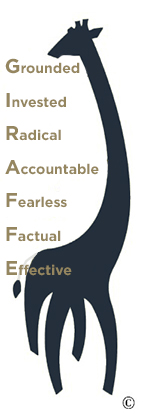In late spring and summer 2020, the Institute of Coaching (IOC) conducted an inquiry into the impact of pandemic-era disruptions on organizations, leaders, leadership, and leadership coaching. Our aim was to explore the lessons for leaders and coaches in shaping a post-pandemic future. A group of nineteen IOC fellows, executive coaches with extensive experience in coaching executives in large organizations, interviewed thirty-three executives in five countries, all of whom were invited to reflect on what they have experienced and learned about leadership and the role of coaching in leadership. Published in October 2021, this report offers insights into a different style of leadership that is needed now.
Chapter 4: Human-Centered Leadership
Humanity Fundamental #1: Expand consciousness
- System awareness – better understanding of outside forces, “the way of the world.”
- Self-awareness – seeing one’s own resources anew.
- Self-awareness – a profound examining and clarifying of personal values andan awakening to deeper meaning.
- Self-awareness – a thorough re-evaluation of priorities.
- Other awareness – what others are experiencing.
- Other awareness – that what people need is continued attention.
- Other awareness – seeing other people’s strengths and resources anew.
- System awareness – awaken to the impact of social strife on work, workers,and culture.
- System awareness – better understanding of outside forces, “the way of theworld”.
- Customer awareness – customers’ contexts and needs have evolved too.
- Higher consciousness leads to better decisions, being more fully aware of thepeople and culture context that influences decisions and alignment.
- Awareness that leaders’ mindsets can be transformed, including mindsetsaround a distributed workforce.
- Awareness of derailers, strengths and opportunities, which enables leadersto help others change.
Humanity Fundamental #2: Cultivate relationships
- Awareness of the nature and vitality of relationships has grown.
- Relationships start with benevolence, having others’ best interests at heart.
- Authentic caring about others’ welfare was demonstrated through a genuineinterest in how people are faring.
- In more cases than not, leaders mean well and have good intentions buthaven’t conveyed their benevolence.
- The pandemic has been a catalyst in cultivating more holistic relationships that includes home lives.
- Leaders became more compassionate about the significant pressures of family life on work lives.
- Awareness of the value of inviting people to be authentic and to convey both emotional and cognitive empathy burst into work life.
- The pandemic introduced many opportunities to deepen relationships.
- To be trusted, it is important for leaders to strike the right balance ofvulnerability and confidence in their relationships.
- Leaders prioritized relationships as the first priority, before the businessagenda.
- Relationship-building is a precondition to securing alignment on strategicand tactical direction and goals.
Humanity Fundamental #3: Support well-being
- Health and safety became a first and foremost focus.
- Leaders were more present, witnessing the stresses and strains onthemselves and their employees.
- Leaders got in touch with diverse individual concerns, including the strain ofisolation for some employees, on top of high stress levels.
- Greater awareness emerged around what self-care looks like, and how tocultivate it for self and others during a crisis.
- Leaders gave more space to employees in a challenging time.
- Supporting time to recover and recharge after extreme stress was addressed.
- The realization that employee health and well-being is a leadership priorityarrived for good.
Humanity Fundamental #4: Integrate diversity
- The trauma of racial inequity and exclusion exploded into leaders’ consciousness, catching them by surprise.
- It became quickly clear that a new leadership priority was to make space for open dialogue on diversity principles.
- It became important to be open and accepting of diverse and conflicting perspectives and concerns.
- Leaders began to see the gaps in diversity and inclusion in collaboration and decision-making.
- They learned that they needed to reach out to seek diverse views, not just react to them.
- Leaders realized that inclusion means being truly seen.
- Leaders recognized that inclusion means being more introspective andempathetic.
- Leaders learned that they need to slow down “decisiveness” to make spacefor diverse perspectives.
- Many leaders recognized that they need to be intentional about incorporatingdiverse viewpoints and, specifically, racial, ethnic and gender diversity.
Humanity Fundamental #5: Build agile cultures
- The pandemic exposed culture limitations, including leading by fear.
- Cultures which motivate by fear, and which are unable to deal with peopleissues well, fared poorly.
- Open and frequent communication that inspires hope contributed to anadaptable culture.
- Organizations which had already integrated agile methods and processeswere able to adapt well.
- The potential of flattening of hierarchies, thus distributing leadership,became more apparent.
- The forces of the pandemic led to a more employee-centered, a moreempowered, culture.
- Leaders who made their people feel supported were rewarded.
- Some leaders set the goal of helping everyone be more resourceful.
- Some leaders discovered that a bold vision of the future was inspiring.
- Some leaders became more ambitious for their people, in order to adapt to anunpredictable world.
- A more ambitious aim for an adaptable culture is one that can handle bigchallenges and become radically flexible.
- The pandemic confirmed the value of more humane leadership styles.
- The value of individual human resilience and agility, not just organizationalresilience and agility, was fully revealed.
- Leaders now understand that people need to feel psychologically safe todescribe their hopes, fears, and vulnerability.
- The leader’s responsibility for employee morale came to light.
To download the entire PDF, click here
Tags: diversity, human, humanity, Leadership, relationships, well being






